The COVID-19 pandemic has not only disrupted the social and economic realities of our communities, but also undermined some of the basic infrastructure we depend on. Our water infrastructure has been at the heart of this realization; its importance to health, hygiene, and safety has never been more obvious, yet millions of disadvantaged and vulnerable households still lack reliable and affordable access to water. Meanwhile, climate change has fueled extreme droughts, fires, and floods that have disrupted or destroyed this essential infrastructure. COVID-19 has exposed the continued neglect of our water infrastructure, magnifying long-standing social and environmental stressors as well as economic inequities.
State and local leaders manage most of our water needs, and many recognize the gravity of its challenges, despite facing massive fiscal constraints due to COVID-19. But federal leaders have not shown the same urgency. As Congress debates recovery strategies and stimulus efforts, water should be a bigger part of the conversation. Water can serve as a lever to achieve greater economic equity and access, environmental resilience, and technological innovation, among other benefits. Now is the time for Washington to elevate water as a core issue to drive a lasting recovery.
In a recent webinar hosted by the Stanford Woods Institute for the Environment (watch video at the end of this post), we discussed a set of practical solutions to address the gaps in water infrastructure and advance new innovations. Below are five key areas of intervention that federal leaders should be focusing on.
Boosting water equity and affordability
Our massive physical infrastructure needs (leaking pipes, overwhelmed sewers, and outdated treatment plants) often overshadow the needs of individual households. Water is ultimately an enabler for health and opportunity, but too many people cannot access or afford it. Lower-income communities of color frequently face some of the greatest water inequities—increased lead exposure and other harmful contaminants threaten drinking water quality in many of these communities, while storm and wastewater overflows inundate their streets and backyards. COVID-19’s economic impacts have also highlighted persistent struggles to pay bills and avoid water shutoffs.
Federal policymakers need to focus more on people, not just projects. That means defining and measuring our water needs in light of our must vulnerable households. Fortunately, the Environmental Protection Agency (EPA) has started to revise its inadequate definition of water affordability to serve as guidance for utilities. But this should be just the beginning—the nation requires increased technical and financial support for customer assistance programs, including a comprehensive utility bill assistance program.
Amplifying water in climate discussions
Climate change is inextricably linked to changes in the water cycle, such as too much or too little water, shifts in precipitation patterns, and untimely melts. Yet much of our national climate discussion focuses on mitigation (reducing greenhouse gases, improving energy efficiency) rather than adaptation (coping with sea level rise, handling extreme storms, etc.). While both are important, federal policymakers need to clearly acknowledge and invest in water-related adaptation efforts, especially since climate disasters tend to affect lower-income, disadvantaged communities the most.
When addressing wildfires, floods, or droughts, local governments are largely on their own. The Federal Emergency Management Agency (FEMA) and other federal agencies provide disaster relief, but utilities and other local leaders often struggle to accelerate proactive infrastructure investments that would improve their long-term resilience. Federal leaders must prioritize our water challenges in climate discussions, measure the fiscal impacts to states and localities, and build more financial and technical capacity at the state and local level for water-related adaptation. For example, establishing clearer federal regulations to govern private sector environmental, social, and governance (ESG) investment—including ways to collaborate with public sector entities such as local water utilities—could get more projects done and help more communities.
Breaking down governance silos
There are more than 50,000 water utilities scattered across the country, making it hard to consistently and comprehensively govern (let alone define) our most pressing water infrastructure needs. Many utilities use antiquated business models that assume resource abundance and steady water sales. Meanwhile, federal agencies such as the EPA operate in the same bureaucratic siloes and oversee the same regulations they did decades ago. These outdated business practices, rigid laws, and fragmented governance structures impair the maintenance of our existing infrastructure and investment in new and innovative solutions.
Federal policymakers need to break down these siloes in order to better manage our national water needs and support a forward-looking governance model centered around the “One Water” concept. This concept involves looking at our drinking water, wastewater, and stormwater needs collectively, particularly when developing plans and launching investments.
To promote more collaborative governance across and within utilities, federal leaders should provide more guidance on the process for setting water rates so as to guarantee access for all households. Second, they should introduce new financial tools (such as a Public Benefits Charge) to enable more integrated resource management. Finally, leaders should implement new regulatory measures (such as water diversification portfolio standards) to better assess and support the financial standing of all utilities.
Investing in the water solutions of today and tomorrow
Our 21st century water infrastructure must address our 21st century environmental, economic, and health challenges. Federal leaders can embrace this shift in two ways.
First, there needs to be a transition to a hybrid infrastructure model that promotes a combination of gray/green and centralized/decentralized infrastructure improvements. Rather than supporting large, centralized treatment facilities and other traditional “gray” infrastructure (which can be costly to maintain and susceptible to climate risks), federal leaders need to look toward nature, floodplains, and other “green” infrastructure for more flexibility and environmental resilience. Doing so can help us recover and reuse every drop of water in our system, create operational redundancies through more distributed systems, and lead to many other environmental and community benefits. Federal leaders can promote these new designs through new financial incentives and pathways—including loans, grants, and tax credits—that encourage local experimentation.
Second, federal leaders need to embrace the digital transition in our water systems. The COVID-19 pandemic has disrupted our standard operating procedures and highlighted the importance of digital solutions, including “advanced metering infrastructure” and leak-detection analytics that help utilities prevent resource loss and maintain affordable, dependable service. Federal leaders should revisit regulations that govern federally owned infrastructure systems and federally funded projects to find room for data-driven solutions. For instance, Forecast-informed Reservoir Operations can help avoid dam failures, and revisions to the U.S. Army Corps of Engineers’ benefit-cost analysis can better evaluate water resources projects.
Expanding green careers
Improving the nation’s physical infrastructure depends on a skilled workforce to construct, operate, and maintain our facilities, but federal policymakers have overlooked these needs for decades. Many of the operators, engineers, and technicians who keep our water clean and essential services online are reaching the ends of their careers and frequently lack visibility, resulting in a diminished pipeline of talent. Meanwhile, millions of workers have lost their jobs during the pandemic, and there are mounting struggles to connect the unemployed to stable, well-paying careers. This gap in hiring, training, and retention comes even as water jobs—many of which are in the skilled trades—offer competitive pay and the opportunity to develop valuable, transferrable work experience.
The COVID-19 recovery gives us a chance to not only rebuild and renew our infrastructure, but to connect more and different types of workers to water careers. Establishing a new, 21st century federal infrastructure workforce program aimed at providing flexible learning and career opportunities in the skilled trades—including water—can help disadvantaged and disconnected workers earn higher pay, learn more skills, and seize enduring opportunities. Expanded apprenticeships and work-based learning programs can prepare a new generation of talent while retraining and assisting other workers in water careers.
Together, these five areas of intervention reveal a national need to focus on future water priorities, not just prevailing trends. Water remains an essential service to all households and industries, but we can’t keep taking it for granted; federal leaders need to intentionally elevate it as an economic and environmental priority. Proactive federal investment in new types of projects and people-centered strategies can support climate resilience, affordable access, and equitable growth. The COVID-19 pandemic has highlighted water’s foundational role and the cracks in our existing system—now it’s time to strengthen our commitment to water solutions that can support us for years to come.
The Brookings Institution is committed to quality, independence, and impact.
We are supported by a diverse array of funders. In line with our values and policies, each Brookings publication represents the sole views of its author(s).
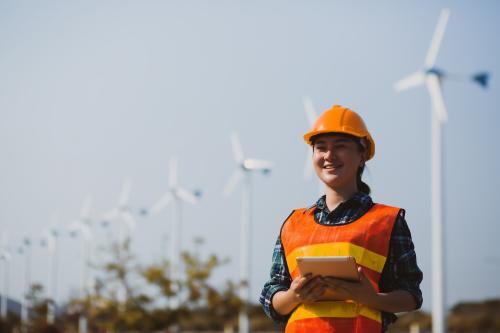
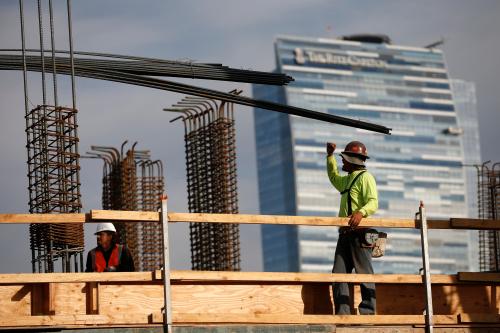
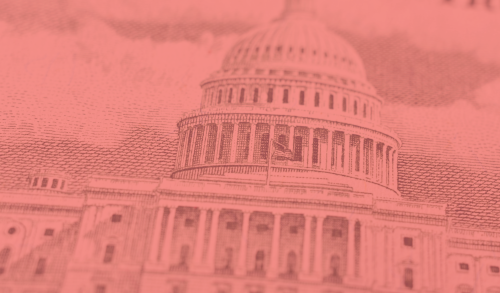


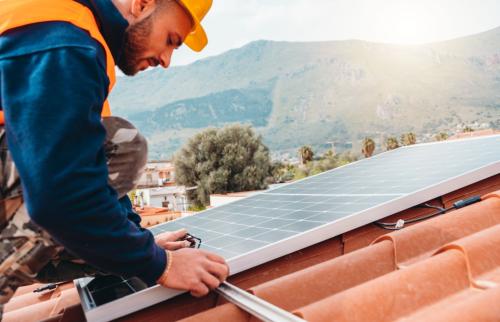
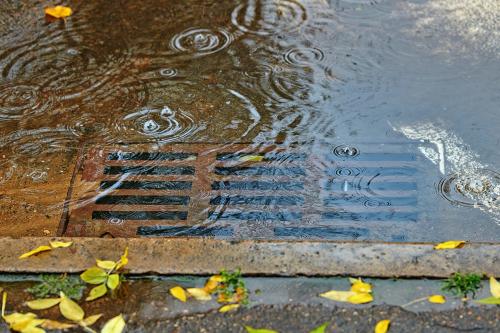
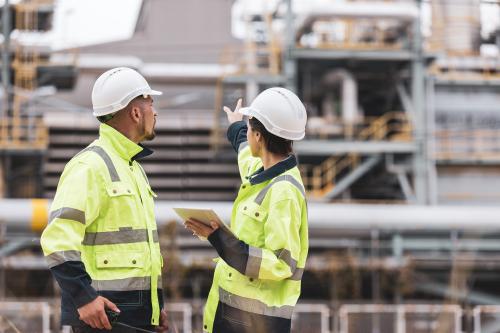
Commentary
The hidden role of water infrastructure in driving a COVID-19 recovery
October 20, 2020